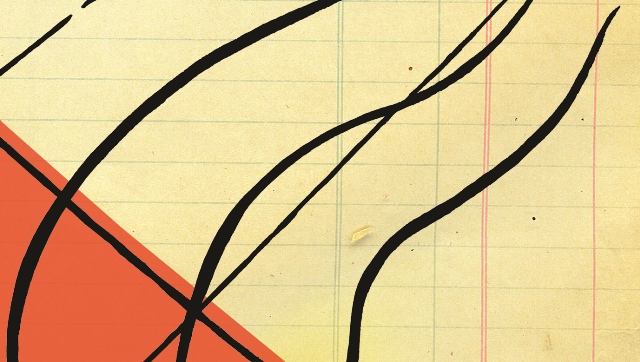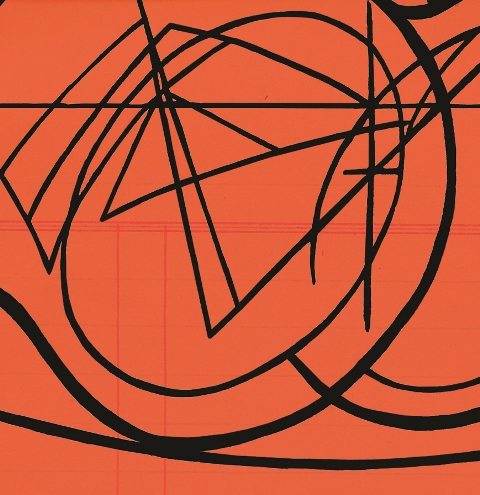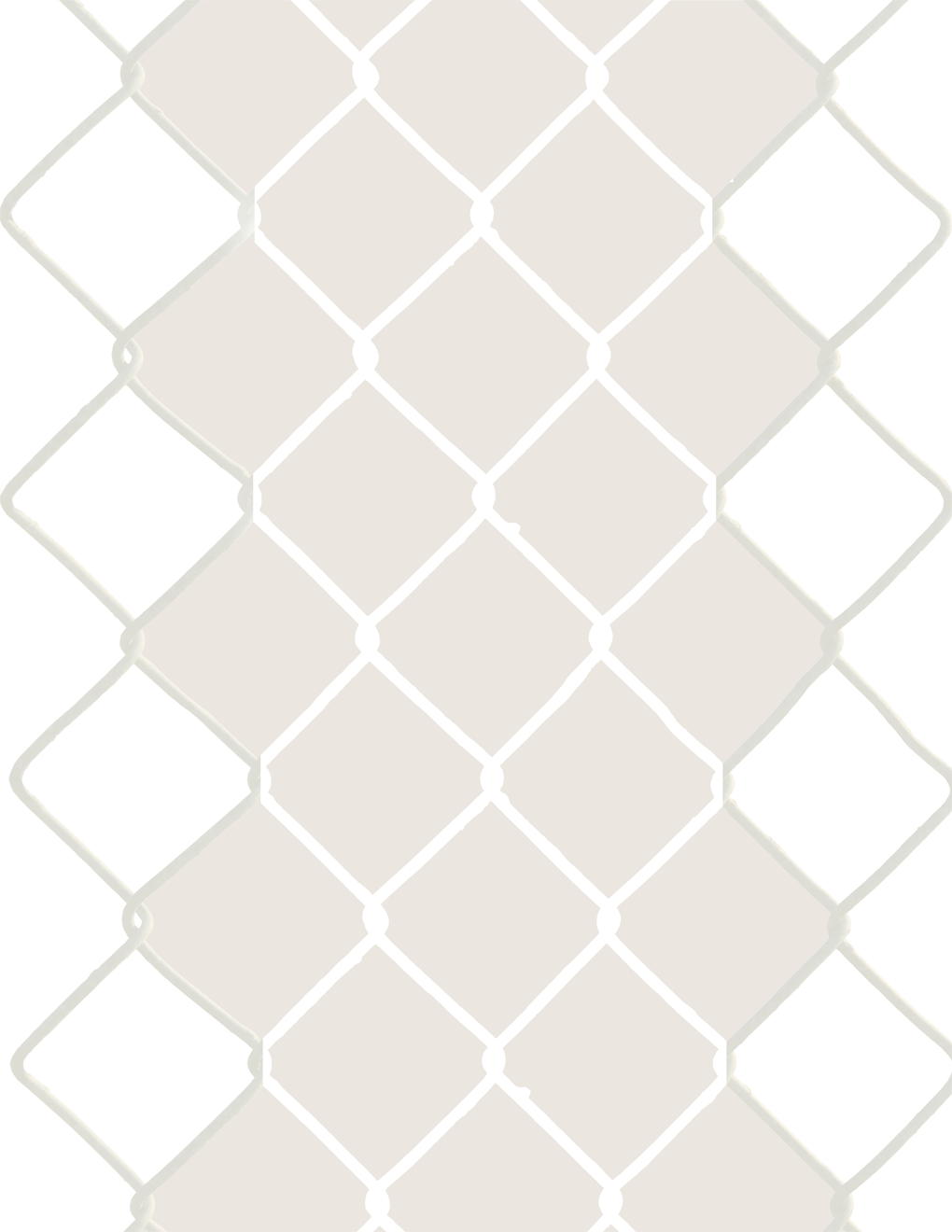|
Patient : Kessler
Kessler, age 41, Caucasian, divorced, pedagogue, born of a family with hereditary taint. Residing in Detroit, Michigan, United States. Simultaneously a dedicated sensualist and a passionate cynic, possessing a spasmodic inclination toward vexation and, according to his own disclosure, as a young man, preferred masturbation to coitus. Further scrutiny of Kessler’s incomplete family history reveals a brother fond of practicing nudism in public art museums, particularly among the departments of antiquity, and a nephew who became insane as a result of excessive masturbation. Under the category of a cerebral anomaly, the patient Kessler suffered from acute hyperaesthesia brought on by fetishism, which had repeatedly induced voluptuous sensations. Over time his condition became markedly substantial with the additional occurrence of hallucinations.
Psychopathology : Modern
The patient’s temperament, peculiar and shifting, had for many years gradually evolved into something altogether more ecstatic, culminating in a paroxysm of constant weeping. Kessler suffered from “aesthetic persecution.” He had grown increasingly suspicious and altogether dismissive of what he believed was an egregious squandering of advances in living design, as found in current architecture and furniture trends. He found his daily environment in direct opposition to the aesthetic harmony he so fervently desired. This induced attacks of hostility which could transform into actual raving, until he had no choice but to flee the space, overcome by the poor design choices.
Eventually, the magnitude of perceived environmental offensiveness grew so large that Kessler was forced to develop zones of refuge for himself. The sensation of persecution was gradually replaced with schematically arranged erotic notions as the means to construct a new, pleasing reality. The somatic and mental basis for such a transformation was a lasting and powerful excitation of the sexual province brought on by aesthetic desire. The patient Kessler conceptualized a form of coitus between himself and specific forms of furniture and architecture in order to satisfy his desire for an immaculately designed environment free of aesthetic discord. The patient grew more and more peculiar, living for a time within a circle of strictly platonic erotic notions, until actual sexual congress had to be achieved with the objects his sanity became dependent upon.
The products of Mid-Century Modernist design, as found in furniture and architecture, were the loci for such erotic fixation and formed the basis for his pursuit of aesthetic rapture. Otherwise ill-mannered and distant to most in his presence, Kessler became noticeably bovine-like at the sight of a harmoniously designed and balanced Modernist building or specimen of furniture. The resulting delirium often manifested as gentle weeping. The patient would interact with a table or a chair as if he were in the midst of an illicit rendezvous, spilling over with sexual excitement. He often dismissed his wife and acquaintances with the wave of a hand, so that he could be alone with a favorite Modernist object, undisturbed, remaining with it behind a locked door for hours. And when the doors were opened once again, he was found laying beside the piece of furniture, exhausted.
 |
I : Gentrify
At the outset, the patient Kessler married and settled into a ranch-style home constructed in 1955 and located in a suburb of Detroit. His psychopathology ostensibly began with the breakdown of his marriage, attributed by Kessler to sexual dysfunction between he and his wife. The marital tension was displaced by the systematic reconfiguration of the interior of the couple’s home, with carefully chosen Modernist furniture from the 1950s. Kessler had developed a theatrical approach to his domestic life as a means to reorder it. As the relationship with his wife decayed, a mania for order took hold in the following stages: Kessler first banned the cooking of any food within the house, and then altogether forbade the presence of food, choosing only to dine in public. Then there was a prohibition on visitors to the house, and eventually a mandatory silence was enforced. As Kessler described his situation, he was seeking a new marriage with space itself: preferably one of expanse that was low and wide, and suggesting a new freedom in silence and stillness.
Following the separation and eventual divorce, in which his wife kept both the house and the furniture, complying with Kessler’s desire for “no attachments,” he relocated to the neighborhood of Lafayette Park within the city of Detroit, taking up residence in The Pavilion high-rise apartments constructed in 1958 and designed by the noted Modernist architect Ludwig Mies Van Der Rohe. It was within this new environment that Kessler furthered his psychic attachment to inanimate objects, fetishizing Mid-Century Modernism as an ideal of evolved living standards and the means to achieve balance and unity. Curiously, it should be noted that, as the patient Kessler was born in 1974, his experience of the Mid-Century era, its products of design and their integration into a lifestyle, was solely a nostalgic projection. The Pavilion, although once a marvel of design and convenience in late 1950’s Detroit, and identified as “Luxury Rental Residences,” was now anything but luxurious, being curiously out-of-date and suffering from the numerous misguided overhauls heaped upon it by the management of the building throughout the years. This however, did not deter Kessler’s fantasy as he assembled an archive of promotional materials dating back to the opening of The Pavilion, announcing it as “a spectacular upsweep of glass and aluminum” and “a dramatic new concept in apartment living.” The printed ephemera allowed Kessler to sustain the notion that the Mid-Century Modern era represented the last true point of progress toward utopia. Any suggestion that the experiments of the past resulted in the current failure of an urban environment were met with outright hostility by Kessler as he clinged to the belief that it is the only way forward. He had an urgent need to stave off the decay of the present by aligning himself to an image of order established in the past. One had to deny breakdown, imperfection, hopelessness. Modernism and its environmental comforts presented a world free of aberration, dirt, oil, random blemishes. Such an illusion denied the possibility of a diseased body or mind.
It could be surmised that, as Kessler’s emotional reality became increasingly fragmented, his need for a cleaner, simpler physical reality was an attempt at compartmentalization and dislocation. A gentrification of self. An additional note should be made of Kessler’s disinterest in the history of the neighborhood he now occupied. The development of Lafayette Park was the result of a Modernist urban renewal project in the 1940s that forcibly relocated and razed a densely populated, working-class African American neighborhood known as Black Bottom. Although the land remained vacant for some time, it was not until the mid-1950s when the “suburb within the city” was planned and executed by Mies and his team. Perhaps to acknowledge such a complicated path to renewal would dislodge Kessler’s own renewal of self.
 |
Here : Plain : White
Situated within a single bedroom unit on the 22nd floor of the Mies building with what Kessler described as an ever-present cleansing light that passed through the curtain glass wall to saturate the space, he initially arranged his environment with replicas or knock-offs of Mid-Century Modern furniture, purchased at a premium cost. But this proved unsatisfactory and soon feelings of guilt, shame and a betrayal of ideals set in. Over time, he replaced the collection of forgeries with authentic, well-preserved Modernist specimens procured from the internet and auction houses. Albeit at great cost. It was as if the more capital spent on acquiring such rarities, prized for their Modernist authenticity by star designers of the era, translated into a direct purchasing of the ideals that led to their production. Kessler needed to be a true believer. Note: I failed to make known to the patient my observation that such behavior was in fact a negation of the principle of “Democratic equality” that was supposedly at the foundation of the Modernist utopian fantasy.
The apartment was populated with the work of Ray and Charles Eames, Harry Bertoia, George Nelson, Florence Knoll, Alexander Girard and Paul McCobb. American Modernists, all and intentionally so. Although a certain severity and minimalism was sought, particularly with regard to the choice of white, off-white or light grey as the default color, Kessler noted an intrinsic “American” aura in the furniture he accumulated, that reinforced the evocation of progress. As an aside, contrary to his line of thinking, Kessler was disinterested in American automobile design of the Mid-Century era, as he viewed it strictly as a vulgar commodification of Modernist ideals.
He sparingly adorned the walls of his apartment with black and white photographic transparencies of long-since departed and disused Modernist architecture in and near the City of Detroit. The transparencies were displayed on elegant, wall-mounted lightboxes, that gave each illuminated image an X-Ray-like effect of once healthy bodies presented for medical inspection. Structures such as the Ford Auditorium, built in 1955 and demolished in 2011 after laying vacant for 16 years, that was the remnant of a failed, unrealized civic design for the Detroit waterfront drawn up by Eero Saarinen; the Reynolds Metals building designed by Minoru Yamasaki, built in 1959 in Southfield, Michigan and now vacant after serving as a Bally Total Fitness center for some time; and Northland Center, a mall designed by Victor Gruen that opened in Southfield, Michigan in 1954 and was now slated for demolition—it was a Modernist milestone in postwar American suburban shopping. The glow of these images fueled Kessler’s nostalgia and induced occasional weeping.
 |
You : Formica : Ecstasy
Kessler purchased a mint-condition copy of “An Exhibition for Modern Living,” a catalog produced for what was heralded as a presentation of the “best in postwar Modernist design,” mounted in the winter of 1949 at the Detroit Institute of Arts and curated by Alexander Girard. A historic moment in educating the public on then-progressive notions of design, the exhibition was comprised of a series of installed showrooms through the museum, demonstrating idealized arrangements of Modernist interiors for the home and office. Kessler carefully studied the catalog and began arranging his own living space in a manner replicating some of the showrooms.
The following observations are sourced from a written account provided by Kessler:
Alone, in my apartment, constructed of elegant planes without tumult or surprise or clutter, the boredom had begun to make itself known. The intervals of patience opened themselves up to a euphoric monotony. Formal arrangements engulfed me and ushered my mind into a state of ocular propulsion and spatial compulsion, as hallucinations took hold. A geometry of bliss resulted from the merging of Formica, Masonite, stainless steel, chrome, fiberglass, leather and lacquered plywood. The angles and surfaces beckoned to me, and yet also denied me with their cold and sterile impenetrability. This distant sense of denial that I was confronted with gave rise to constant physical stimulation with recurring, robust erections. These were objects—chairs, tables, lamps, a daybed, a desk, storage units—that could suggest the presence of bodies. My hallucinations began to animate the inanimate, as a psychic cinema unfolded sequences of construction and deconstruction. At first, I imagined phantom bodies, male and female, falling into and getting out of the furniture. I replayed these scenarios of naked physiques crawling over my collected Modernist specimens, accepting the architecture of each piece as an alteration of the body’s physical behavior. But then the images of human flesh disappeared, replaced by a new anatomy: the furniture itself. Chrome plated legs wrapped around molded fiberglass shells, angularity gave way to modularity, scissor frames and crossbars and leather straps, metal rods and L-section steel bars, X-frame braces—all of these tensed supports embraced me, held me in a secure place. The polished stainless steel, wood laminate and perforated metal dematerialized a sense of my own body.
Following Kessler’s hallucinations, the masturbation began. But this was a clinical, mechanical form of pleasure. An unending form of anti-release taken up as a compulsion rather than a pleasure. By his own account, Kessler’s masturbatory fits were frequent at first and then nonstop. Once a regular routine was established, his psychic decline accelerated and aligned itself with habitual sexual fantasies revolving around Modernist furniture and architecture. Once Kessler had become overly familiar with the angles and curves and surfaces of one piece of furniture, he had to remove the item from his apartment and replace it with a newer, more unfamiliar piece. This promiscuity was necessary to keep his fantasies fresh and to activate new hallucinatory sensations. He discovered over time that a different design could produce a different level of release and that, in fact, different designers could produce different sexual responses in him. He began yelling out the names of furniture models and Modernist designers at the point of climax.
 |
Closer : Cut-Up : Re-Mix
As the hallucinations subsided, thus began the next phase of Kessler’s psychopathology. The ocular projection onto an object in which Kessler manufactured his own fantasies gave way to a more direct form of stimulation in which the object had to be flattened and transformed into a pre-edited, fetishistic image for quick consumption. Kessler began photographing details of furniture in which close-ups of structural details, curves, angles and surfaces were isolated from the context of the total object. He accumulated collections of these images, placing them into binders that could be described as Modernist pornography. He would edit the images into a particular sequence and then masturbate during viewing sessions of the sequences. But this too eventually led to increased boredom. He no longer wanted photographs of objects he possessed, but images of objects he did not possess. Above all, he prized photographs taken by others during the Mid-Century era itself, so that time and space could be collapsed even further.
He collected vintage publications by the Herman Miller furniture company, catalogues of Paul McCobb’s Planner Group line of furnishings and of the Knoll and Steelcase office furniture lines. He would carefully cut out details from illustrated specimens and assemble collages of legs, arms, cushions, seat rests, head rests and all manner of supports and surfaces. Thus, a diagrammatic intercourse with the past was accomplished through this schematic eroticism. But Kessler eventually ceased this act of re-mixing in favor of a new strategy: viewing and masturbating to the objects as presented within blissful domestic scenarios in the pages of magazines from the Mid-Century Modern era. Here, in advertisements for then-progressive living standards, Kessler sustained himself on a commodified eroticism entirely dependent on consumable design strategies from an era long past as it spoke to his desire for a newly fabricated reality. He also sought out industrial films produced by manufacturers to highlight the era’s progress toward “better living through design.” Projected onto a blank wall in his apartment, Kessler spent many hours watching and pleasuring himself to, “American Look,” a film produced in 1958 by General Motors and made by the Jam Handy Organization in Detroit. It was an ode to the optimism of the time by way of Modernist design and it fortified Kessler’s notion of sexual stimulation as a logical process of personal reclamation.
But all of these ocular experiences ultimately proved dissatisfying for Kessler, as the activity of merely viewing felt passive. It was too small a bandage for what was a festering wound. He needed direct contact. He needed a rebirth of self through an act of transubstantiation. This required a new level of direct interaction, as Kessler had to be closer to the object. More to the point, he felt a compulsion to merge with it and have the design ideal pass into him. Although the details are vague due to information withheld by the patient during our sessions together in which descriptions of Kessler’s activities were selectively withheld, there is some knowledge that he did begin a series of intimate, physical interactions with his furniture. In lengthy, almost ritualistic scenarios of silence and order, the patient wished to project his physical presence into the flux of historical erasure he was surrounded by. A cleanliness in these activities was strictly enforced as he chose to remain fully clothed. According to his own descriptions, Kessler prepared himself by shaving his entire body, removing all traces of hair, including that on his genitalia, and evenly coating himself with petroleum jelly from shoulders to toes. He then attired himself in formal wear in pressed slacks, a jacket, crisply ironed white shirt and a slender black tie. The resulting sensation was a heightened awareness of his body as if he were nude without being naked. Like a swimmer crossing a channel in complete control of his body’s power over the elements. In our examination sessions, he informed me that the cleanliness and order of his living space soon began to deteriorate. The ritual of being clothed gave way to a state of undress. Dried ejaculate soon covered the floor of the apartment, and there was an ever present smell of sweat and glandular excretion. The furniture took on an unwanted patina with various tears and rips appearing in the upholstery, along with scrapes in the Formica, wood and Masonite. Kessler lost all sense of time and gone was his relationship to the outside world and the basic day-to-day practice of personal and environmental maintenance. Due to recorded complaints by his neighbors, the patient was evicted from his apartment and, due to an accumulation of absences, he was put on indefinite, unpaid leave from the university where he had served as a Provost for the past seven years. Kessler was now in a freefall.
 |
Outside : Show : Room
Having taken up residence in a hotel, Kessler was without a home or the means to access his fantasies privately on the scale he desired. So the patient took to visiting public furniture showrooms and the lobbies and offices of Modernist buildings in and around the City of Detroit to reconnect with his impulses. These public excursions brought with them a newfound level of risk as Kessler had in essence transitioned himself from a closeted fetishist into a voyeur and an exhibitionist prone to being outed. Using what few connections he had left with a small network of friends, the patient would ingratiate himself into social circumstances that allowed him an invitation to meetings and gatherings in Modernist buildings such as the Mies townhouses in Lafayette Park or the Yamasaki-designed skyscraper in Downtown Detroit. Once access was gained, he would extricate himself from the goings-on to find a quiet space where, alone, he could retreat into a ritualized fantasy. All the better if the space also contained a Modernist chair or sofa, which was often the case. At one point, due to great pains taken to carefully establish an elaborate series of connections, he was able to insinuate himself into a visit of the sprawling General Motors Technical Center in the Detroit suburb of Warren, designed by Eero Saarinen and opened by President Dwight D. Eisenhower in 1956. The visit, as reported by Kessler, yielded numerous pleasures within spaces normally off-limits to the general public. As such opportunities became increasingly few and far between, Kessler had to settle for excursions to upscale furniture showrooms in affluent Detroit suburbs, where he would variously sniff the olfactory traces of those who had sat on a sofa, or lick the backrest of a Modernist chair, which reinforced an anthropomorphism of the desired objects. Sometimes, though, a quick-fix was needed and the only option available was a brief visit to an IKEA showroom, where he would select the specimen of furniture closest to his design ideals and watch at a distance as others considered it, masturbating under the cover of his lengthy coat. Such excursions, however, made Kessler feel cheap and ashamed of himself.
The patient’s final act of public transgression, occurred during a design conference held in Detroit, for which interior and architectural design firms had gathered to reflect on the successes of the past and the road forward in innovation. At a booth operated by Knoll Furniture, a Barcelona Couch designed in 1930 by Ludwig Mies Van Der Rohe was on display. It retailed for $10,221.00. Kessler, who purchased a ticket to the conference, spent a great deal of time observing the couch.
From the patient’s personal, written account:
I studied the couch’s command of clean lines, the elegant simplicity of its proportions. I began to weep. The white leather upholstered surface, made of hand-welted and hand-tufted leather panels, beckoned me. I trembled uncontrollably. Finally, I ran to the Barcelona couch, produced a small pocket knife, penetrated the upholstery by making a six-inch incision in the white cowhide, and I inserted my erect member into the depths of premium quality, fire-retardant, high-resiliency urethane foam with down-like Dacron polyester fiberfill. I held onto the cowhide belting upholstery straps and bit down hard onto the bolster until I ejaculated into the couch.
For this, Kessler was apprehended on site, by members of local law enforcement.
Clinic : Delvaux
After a trial in which he was charged with indecent public exposure for raping the Mies couch, Kessler was transferred to the Delvaux Clinic for Psychic Reintegration, or the DCPR, in a nearby suburb of the city, where he was placed under my supervision and care. After a series of careful and thorough examinations of the patient, he and I set about exploring treatment for his psychopathology. The challenge was thus: to cure the patient Kessler of his destructive tendencies without erasing his inclination toward improved aesthetic conditions and environmental harmony. This began with a careful examination of his childhood upbringing, recollections of his mother and father and intensive scrutiny of his marriage. Supplemental sessions yielded honest investigations into how Kessler’s search for a private utopia in fact yielded conditions suggesting a dystopia, in which his reverence for the design object transformed into the defilement of an ideal. Numerous corrective procedures to realign the patient’s aesthetic demagoguery had been discussed with my colleagues. These included:
- Firmly securing Kessler to a chair and forcing him to observe projected documentation of the eventual demise of the Modernist ethos. This would include filmed sequences such as the implosion of the Pruit-Igoe Modernist urban housing project in St. Louis, designed by Minoru Yamasaki and completed in 1956.
- Forcing the patient to witness live nude human subjects, organized into couples, that proceed to fornicate in, around and on top of Modernist furniture. Slowly, the furniture is removed until only the engaged couples remain.
- Performing a sequence of destructive actions before Kessler, in which Mid-Century Modernist furniture is repeatedly obliterated by hammer, fire and saw, and then replaced with more contemporary, equally successful examples of well-designed furniture.
There : Utopia
Such procedures could not be implemented by myself or the clinic staff. In the midst of his treatment, the patient Kessler slipped out from under the supervision of the DCPR early one morning, and eventually made his way out of the country on a flight to Europe. The remaining minimal fragments of information illustrating Kessler’s activities and whereabouts were supplied by postcards mailed directly to the clinic, addressed to me. It became known that, despite his increasing inability to assimilate into a responsible pattern of navigating social structures, Kessler’s travels were sustained by an overriding plan of action to reach a place in which his desire for aesthetic transformation could be validated. In his communications, the patient self-identified as a Utopian Tourist seeking distant locations where the Modernist experiment of establishing a utopia through design and architecture was brought to fruition. In elegant elucidation, Kessler reached the conclusion that despite prior assumptions, American Modernist design was but a means to create a more comfortable middle-class culture, a style of living if you will, whereas European Modernism had set out to change the world through the implementation of aesthetics as an extension of democratic socialism. I was of the view that such a position was merely intended to provide a rationale for Kessler’s escape from the United States. Kessler’s first point of exploration in his search for utopia was Chandigarth, in Northern India, site of a massive Modernist civic project with a master plan by the Swiss-French architect Le Corbusier. Although the timeline is lacking in precise detail and possible other points of investigation among other locales, it seems that from Chandigarth, Kessler then travelled to another example of a vast Modernist civic project—the Brazilian capital of Brasília, planned and developed in 1956 by Lúcio Costa and Oscar Niemeyer. Following this last postcard, communication with the patient had ceased for a year until I had received a link to an internet story, discovered by a colleague, indicating that an American traveler carrying the credentials of Kessler had been killed in Brasília by an automobile. He had been attempting to cross a street in an area that was not suited to pedestrian traffic.
Images by Ryan Standfest |











